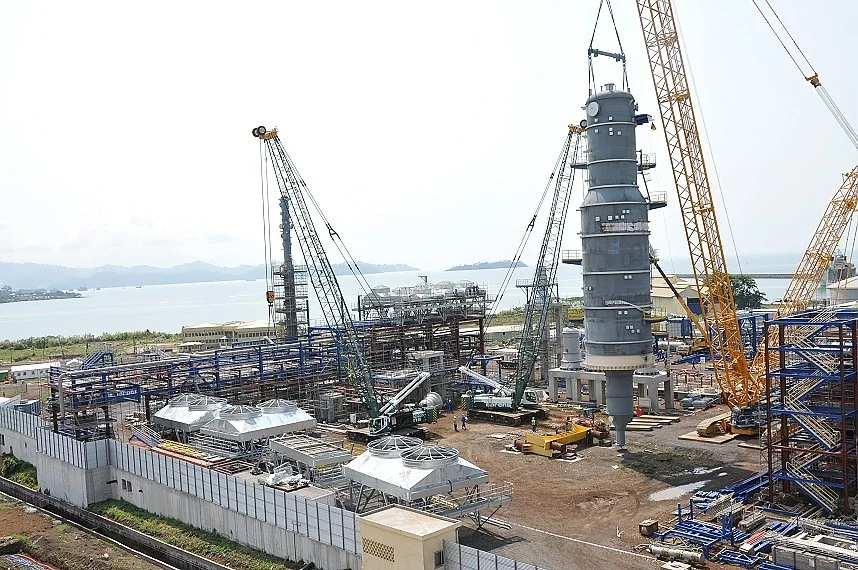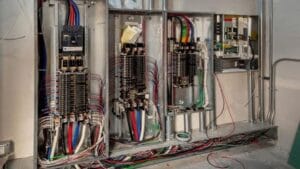Building the Future: Exploring Modern Construction Technologies in Cameroon
Cameroon, a nation brimming with potential and undergoing significant infrastructural development, stands at the cusp of a transformative era in its construction sector. While traditional methods have long shaped its urban and rural landscapes, a wave of modern construction technologies is beginning to take root, promising enhanced efficiency, improved quality, greater sustainability, and ultimately, a more robust built environment. This comprehensive exploration delves into the burgeoning adoption of these innovative techniques in Cameroon, examining their potential, challenges, and the path forward for a sector vital to the nation’s progress.
The Imperative for Modernization: Addressing Cameroon’s Construction Needs
Cameroon faces a confluence of factors that necessitate a shift towards more modern construction methodologies. A rapidly growing population, increasing urbanization, and the need for resilient infrastructure to support economic development are placing immense pressure on the existing construction industry. Traditional methods, while familiar, often grapple with limitations such as:
- Time-consuming processes: Conventional construction can be lengthy, leading to project delays and increased costs.
- Labor-intensive practices: Reliance on manual labor can impact efficiency, quality control, and safety.
- Material wastage: Traditional methods often generate significant material waste, impacting both cost and environmental sustainability.
- Quality inconsistencies: Achieving uniform quality across large-scale projects can be challenging with purely manual techniques.
- Limited design possibilities: Complex or innovative architectural designs can be difficult and expensive to execute using traditional approaches.
- Environmental impact: Conventional construction often involves high carbon emissions through material production and transportation.
Addressing these challenges requires embracing modern construction technologies that can streamline processes, optimize resource utilization, enhance quality, and promote sustainability.
Emerging Modern Construction Technologies in Cameroon:
While the widespread adoption is still in its nascent stages, several modern construction technologies are beginning to gain traction and hold significant promise for Cameroon’s construction sector:
1. Prefabrication and Modular Construction:
This technology involves manufacturing building components (walls, floors, roofs, even entire rooms or modules) off-site in controlled factory environments. These components are then transported to the construction site for assembly.1
- Potential Benefits in Cameroon:
- Reduced construction time: Off-site manufacturing allows for parallel processes, significantly accelerating project completion.
- Improved quality control: Factory settings enable stringent quality checks and precision manufacturing.
- Minimized material waste: Controlled environments lead to more efficient material usage.
- Reduced on-site labor: Assembly requires less on-site manpower, potentially addressing labor shortages and costs.
- Suitability for repetitive designs: Ideal for mass housing projects, schools, and healthcare facilities.
- Adaptability to remote locations: Easier transportation and assembly in areas with limited infrastructure.
2. 3D Printing (Additive Manufacturing) in Construction:
This innovative technology uses computer-aided design (CAD) to create three-dimensional structures layer by layer using materials like concrete, polymers, or composites.
- Potential Benefits in Cameroon:
- Design flexibility: Enables the creation of complex and customized architectural forms.
- Reduced material waste: Materials are used precisely where needed.
- Potentially lower labor costs: Automation reduces reliance on manual labor.
- Faster construction speeds (for certain applications): Can be quicker than traditional methods for specific structural elements.
- Use of locally sourced materials (potential future development): Research into using local aggregates and binders for 3D printing could revolutionize affordable housing.
3. Building Information Modeling (BIM):
BIM is a digital representation of the physical and functional characteristics of a building. It2 involves creating and managing3 information throughout the project lifecycle, from design to demolition.
- Potential Benefits in Cameroon:
- Improved collaboration: Facilitates seamless information sharing among architects, engineers, contractors, and clients.
- Enhanced design visualization: Allows for better understanding and communication of the design intent.
- Clash detection: Identifies potential conflicts between different building systems (e.g., structural, MEP) before construction begins, reducing errors and rework.
- Accurate cost estimation: Provides more precise quantity take-offs and cost projections.
- Efficient project management: Enables better scheduling, resource allocation, and progress tracking.
- Lifecycle management: Supports efficient operation and maintenance of the building after completion.
4. Advanced Materials:
The adoption of innovative and high-performance building materials can significantly impact the quality, durability, and sustainability of construction projects.
- Examples with Potential in Cameroon:
- High-strength concrete: Allows for slimmer structural elements, reducing material usage and increasing usable space.
- Lightweight concrete: Easier to handle and transport, reducing structural loads and transportation costs.
- Insulated concrete forms (ICFs): Combine formwork, insulation, and structure in one system, improving energy efficiency.
- Sustainable materials: Bamboo, locally sourced timber (with proper treatment), recycled materials can reduce environmental impact and support local economies.
- Smart materials: Materials with integrated sensors for monitoring structural health, temperature, or humidity.
5. Automation and Robotics:
While still in early stages globally, the use of robots and automated systems in construction can improve efficiency, safety, and precision for repetitive tasks.
- Potential Future Applications in Cameroon:
- Automated bricklaying: Increasing speed and accuracy in masonry work.
- Robotic welding: Enhancing the quality and speed of steel structure fabrication.
- Automated material handling: Improving efficiency and safety on construction sites.
- Drones for surveying and inspection: Providing aerial views for site analysis, progress monitoring, and defect detection.
6. Digital Project Management Tools:
Cloud-based software and mobile applications for project management can streamline communication, collaboration, and information flow on construction sites.
- Potential Benefits in Cameroon:
- Real-time progress tracking: Enables better monitoring and identification of potential delays.
- Improved communication: Facilitates seamless information exchange between stakeholders.
- Centralized document management: Ensures easy access to drawings, specifications, and other project-related documents.
- Enhanced cost control: Provides tools for tracking expenses and managing budgets.
- Better resource allocation: Optimizes the deployment of labor, equipment, and materials.
Challenges to the Adoption of Modern Construction Technologies in Cameroon:
Despite the immense potential, the widespread adoption of modern construction technologies in Cameroon faces several significant challenges:
- High Initial Investment Costs: Many advanced technologies, such as prefabrication plants, 3D printers, and sophisticated BIM software, require substantial upfront capital investment, which can be prohibitive for many local construction firms.
- Lack of Skilled Workforce: Implementing and operating these technologies requires a skilled workforce with specialized training in areas like digital design, robotic operation, and advanced material handling. Cameroon’s current education and vocational training systems may need to adapt to meet these demands.
- Limited Awareness and Understanding: There may be a lack of awareness and understanding of the benefits and implementation processes of these technologies among some stakeholders in the construction sector.
- Resistance to Change: Traditional practices are deeply ingrained, and there may be resistance to adopting new and unfamiliar methods.
- Infrastructure Limitations: Inconsistent power supply, limited internet connectivity, and transportation challenges in certain regions can hinder the effective deployment of some technologies.
- Regulatory Framework: The existing building codes and regulations may not fully accommodate or incentivize the use of modern construction techniques.
- Supply Chain Constraints: Access to specialized materials and equipment required for some technologies may be limited or expensive.
- Economic Viability for Small and Medium-Sized Enterprises (SMEs): The majority of construction firms in Cameroon are SMEs. Ensuring the economic viability and accessibility of these technologies for them is crucial for widespread adoption.
Strategies for Fostering the Adoption of Modern Construction Technologies in Cameroon:
Overcoming these challenges and unlocking the potential of modern construction technologies in Cameroon requires a multi-faceted approach involving collaboration between government, industry, and academia:
- Government Initiatives and Policies:
- Developing and updating building codes and regulations: To accommodate and encourage the use of modern construction techniques and materials.
- Providing financial incentives and subsidies: To help construction firms, especially SMEs, invest in modern technologies.
- Investing in vocational training and education programs: To develop a skilled workforce capable of utilizing these technologies.
- Promoting research and development: To explore the adaptation and application of modern technologies using local materials and resources.
- Raising awareness and showcasing successful pilot projects: To demonstrate the benefits of modern construction technologies.
- Streamlining approval processes for projects utilizing modern methods: To reduce bureaucratic hurdles.
- Industry Collaboration and Capacity Building:
- Establishing industry associations and knowledge-sharing platforms: To promote the exchange of information and best practices.
- Encouraging partnerships between local and international firms: To facilitate technology transfer and expertise development.
- Investing in training and upskilling existing workforce: Through workshops, seminars, and on-the-job training programs.
- Promoting the adoption of digital tools for project management and collaboration.
- Developing local supply chains for advanced materials and equipment.
- Academic and Research Institutions:
- Integrating modern construction technologies into curricula: To prepare future generations of construction professionals.
- Conducting research on the adaptation and application of these technologies in the Cameroonian context.
- Collaborating with industry on pilot projects and technology demonstrations.
- Developing innovative solutions using local materials and addressing specific local challenges.
- Financial Institutions:
- Developing financing mechanisms and loan products: Specifically tailored to support investments in modern construction technologies.
- Assessing the long-term cost savings and benefits of these technologies when evaluating project financing.
The Path Forward: A Phased and Adaptive Approach:
The adoption of modern construction technologies in Cameroon is likely to be a gradual process, requiring a phased and adaptive approach. Initial efforts may focus on:
- Promoting the use of digital tools for project management and BIM for larger projects. These technologies offer significant improvements in efficiency and collaboration with relatively lower initial investment compared to manufacturing-based technologies.
- Encouraging the use of advanced materials that offer immediate benefits in terms of durability, energy efficiency, and reduced material consumption.
- Supporting pilot projects utilizing prefabrication and 3D printing in specific sectors like affordable housing and social infrastructure, where the benefits of speed and cost-effectiveness are particularly relevant.
- Investing strategically in vocational training programs focused on digital skills, advanced material handling, and the operation of automated equipment.
As the benefits of these initial adoptions become evident and the necessary skills and infrastructure develop, the adoption of more capital-intensive technologies like large-scale prefabrication and construction robotics can be gradually scaled up.
Conclusion: Building a More Sustainable and Efficient Future for Cameroon
Modern construction technologies hold the key to transforming Cameroon’s construction sector, enabling the nation to build more efficiently, sustainably, and with higher quality. While challenges exist, a concerted effort involving government support, industry collaboration, academic engagement, and strategic investment can pave the way for a future where these innovative techniques are integral to shaping Cameroon’s built environment. By embracing these advancements, Cameroon can address its growing infrastructure needs, create better living spaces, and build a more resilient and prosperous future for all its citizens. The journey towards modernization has begun, and its successful navigation will be crucial for Cameroon’s continued progress and development in the 21st century. The adoption of modern construction technologies is not merely an option; it is an imperative for building the future of Cameroon.




